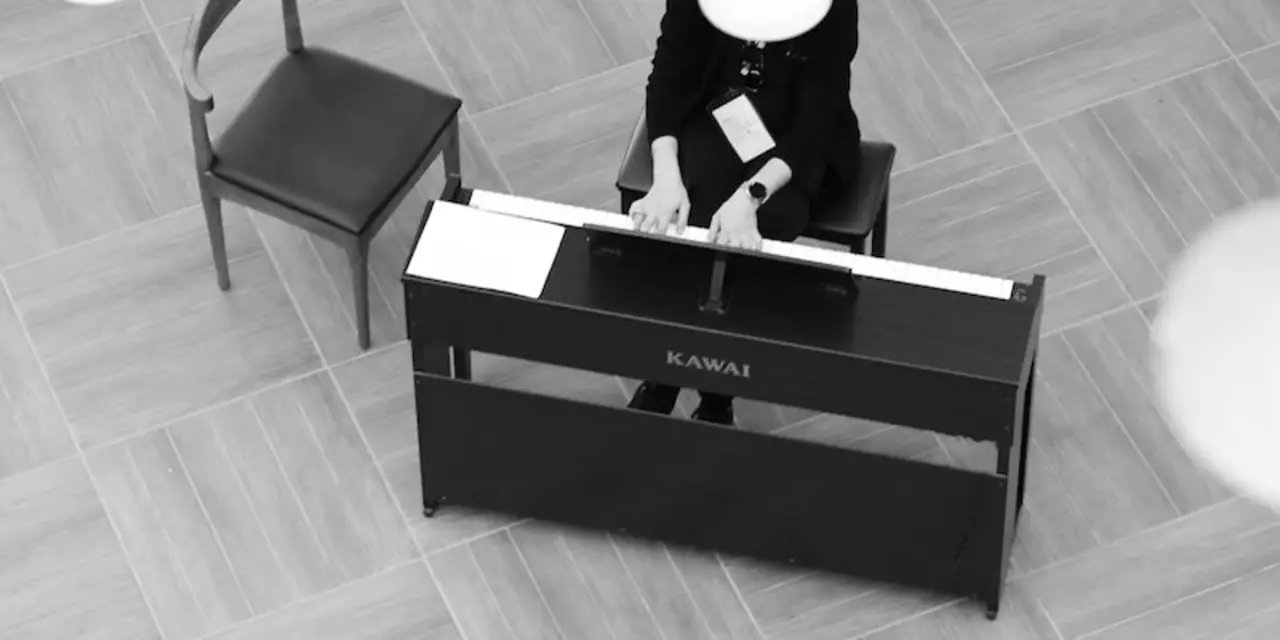Music has been described as a language of emotion, conveying a range of emotions through various combinations of notes. But can these notes be imagined in a melody? Is it possible to visualize the notes that make up a melody?
The answer is yes, it is possible to imagine musical notes in a melody. Through the use of various techniques, such as sight-reading, aural recognition, and rhythmic analysis, it is possible to create an image of the notes that make up a melody. Sight-reading involves reading the notes from a sheet music and creating a mental image of them. Aural recognition involves listening to a piece of music and recognizing the individual notes that make up the melody. Finally, rhythmic analysis involves analyzing the rhythm of the melody and creating a mental image of how each note fits into the overall rhythm of the piece.
Using these techniques, it is possible to create an image of the notes in a melody, enabling musicians to better understand and appreciate the music they are creating or listening to. This can also be a helpful tool for songwriters, allowing them to visualize the notes they are composing. In addition, it can be a useful tool for music teachers, allowing them to show their students the structure of the music they are teaching.
The ability to imagine musical notes in a melody can be a powerful tool for musicians, allowing them to better understand and appreciate the music they are creating or listening to. It can also be a helpful tool for songwriters and music teachers, allowing them to visualize the notes they are composing or teaching.
For some, music is a language. It speaks to us, captivating us and inspiring us to create our own melodies. But for others, it can be difficult to imagine the notes in a melody. So how can one visualize the notes in a melody? Here are some tips to help you do just that.
1. Listen Carefully
The first step to visualizing musical notes in a melody is to listen carefully. Pay attention to the individual notes and how they’re arranged. Notice how each note is related to the one before and after it. Notice the pitches, rhythm and any other musical elements that make up the melody.
2. Learn the Musical Notation System
The musical notation system is a way of visually representing the notes in a melody. Learning this system will help you to identify the notes in a melody more easily. It can also help you to learn how to play the melody on an instrument.
3. Practice Visualizing the Notes
Once you’ve familiarized yourself with the musical notation system, start practicing visualizing the notes in a melody. Listen to a melody and try to picture the notes as they’re played. You can also try playing the melody on an instrument to help you visualize the notes.
4. Experiment with Different Instruments
Different instruments have different sounds, which can help you to visualize the notes in a melody. Try listening to a melody on different instruments to get a different perspective. You may find that certain instruments help you to visualize the notes in a melody more easily.
5. Draw the Notes on a Piece of Paper
Drawing the notes on a piece of paper can also help you to visualize them. Draw the notes on a staff, and then add the symbols that represent the different notes. This will help you to see the melody in a new way, and can be a great way to practice visualizing the notes in a melody.
It's no secret that music is a powerful form of expression. But did you know that with some practice and imagination, you can actually visualize musical notes in the melody? This is a skill that can help you become a better musician and composer, as it allows you to better understand the structure of a piece of music, and gives you the freedom to create something entirely new.
To begin, let's start with the basics. Musical notes are made up of two components: frequency and amplitude. Frequency is the rate at which the note is played, and amplitude is the volume or intensity of the note. When you listen to a melody, you can imagine each note as a point on a graph. If you can imagine the frequency and amplitude of each note, you can begin to get a better understanding of the structure of the piece.
Once you have a basic understanding of the structure of the melody, you can begin to imagine what notes would sound like if they were added or changed. This is where your creativity comes into play. You can think of each note as a colour, an image, or even a feeling. This way, you can begin to arrange the notes in different combinations to create something unique.
Imagining musical notes in a melody can be a great way to become a better musician and composer. It's a skill that requires practice and patience, but once you've mastered it, you can create something truly special. So, why not give it a try?
When it comes to creating music, discovering new ways to imagine musical notes in a melody is an important part of the creative process. Whether you're a beginner or a professional musician, finding creative ways to imagine notes in a melody can help you make your music more interesting and unique.
One way to imagine musical notes in a melody is to focus on the rhythm. By breaking down the beats of the song and listening carefully to the individual notes, you can start to imagine how different notes would sound in the melody. For example, if you hear a simple two-note melody, try imagining how a third note could be added to make the melody more interesting.
Another way to imagine musical notes in a melody is to focus on the chords. By studying the chord progression of the song, you can start to imagine how different notes could complement the existing chords. For example, if you hear a chord progression with three chords, try imagining how a fourth chord could be added to the progression.
Finally, you can also imagine musical notes in a melody by studying the melody itself. By listening closely to the melody, you can start to imagine how different notes could be used to create an interesting and unique sound. For example, if you hear a simple melody with four notes, try imagining how a fifth note could be added to make the melody more interesting.
Imagining musical notes in a melody can be a great way to add creativity and interest to your music. By experimenting with different rhythms, chords, and melodies, you can discover new ways to create interesting and unique sounds.









